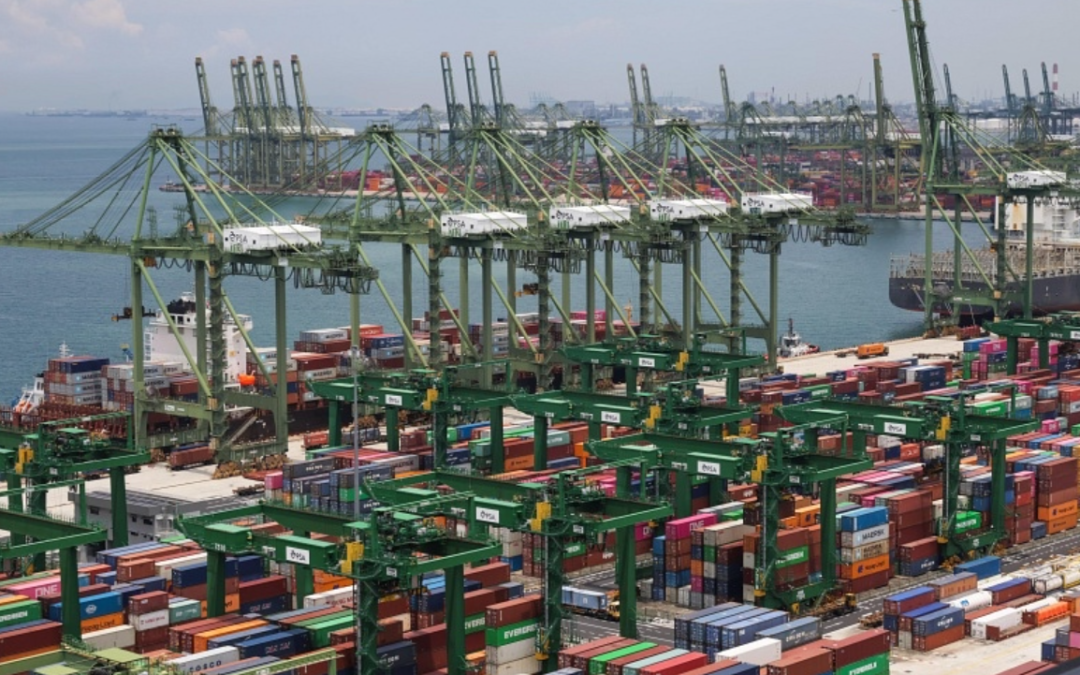S’pore consumers, ports could benefit from reshuffling of alliances among world’s largest shipping lines
SINGAPORE – Local ports could benefit as the world’s largest shipping lines restructure alliances in the light of major trade routes being redrawn around the Horn of Africa to avoid violence in the Red Sea.
Denmark’s Maersk and Swiss-run MSC, two of the world’s largest container shipping lines, will dissolve their existing alliance from February 2025 to reduce costs and improve service coverage.
Maersk will forge the Gemini Cooperation with German liner Hapag-Lloyd to cover shipping between Asia and the United States, with an aim to deliver “above 90 per cent schedule reliability” on the route, the carriers announced on Sept 10.
MSC will operate independently.
Meanwhile, Taiwan’s Yang Ming, South Korea’s HMM and Singapore-headquartered Ocean Network Express will form the new Premier Alliance to operate in key East to West routes.
Shipping alliances enable liners with similar strategies to pool their vessels and share port facilities along certain trade routes to reduce costs like taxes and bunker fuel..
The liners are also able to broaden their service coverage and customer base on those routes.
The changes in global shipping alliances will reshape the dynamics for both liners and ports, redefine shipping routes and strengthen the connectivity via Singapore, said a spokesman for Singapore port operator PSA.
“We are anticipating an increase in the number of services via Singapore which will provide more routing options and connectivity to shippers, thereby enhancing the global supply chain.”
Ms Trine Nielsen, global head of ocean freight at logistics management firm Flexport, added that the restructuring of shipping networks by the Gemini and Premier alliances will not only ensure profitability for the liners, but also benefit their customers, including those in Singapore.
Shipping lines and alliances design networks – the routes and port connections that liners use to transport goods – that have a good balance of demand and supply to give stability in quality and rates for their customers.
“By directing resources to high-demand ports and reducing imbalances, these changes should improve service reliability and potentially speed up delivery times, benefiting clients and end consumers,” said Ms Nielsen.
She added that with new alliances forming and shipping networks redrawn to optimise efficiency and meet demand, shipping rates, which have surged as a result of disruptions in the Red Sea, should soften and make shipping more affordable for customers.
The anticipated rise in traffic would also come at a time when Singapore is already handling much higher container volumes than before.
This is because more ships are rerouting around the Cape of Good Hope in South Africa to avoid the Red Sea, with many arriving off-schedule in Singapore as a result of more unpredictable schedules.
Liners are also using Singapore as a transshipment port to unload cargo bound for other ports in the region.
Singapore’s ports moved a record total of 27.43 million twenty-foot containers in the first eight months of the year, up 6.4 per cent on the same period in 2023, noted Maritime and Port Authority of Singapore (MPA) data.
The rise in traffic led to congestion at local ports earlier in 2024 that lasted for days, leading to inconveniences such as delays in the goods delivery.
Steps have since been taken to reduce waiting times at the port to no more than two days.
Source: The Straits Times : dated 23/09/24

